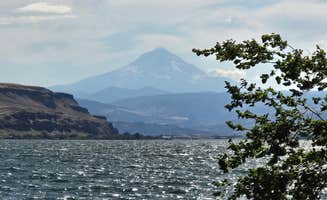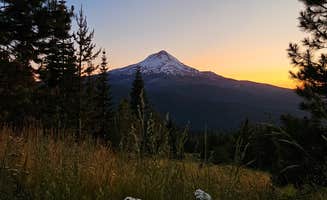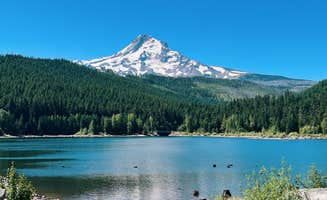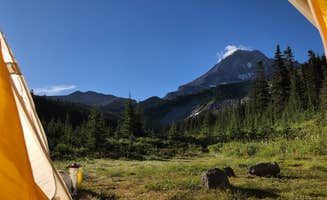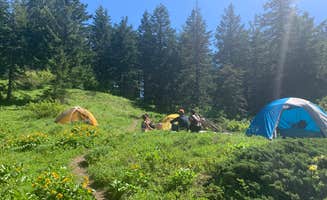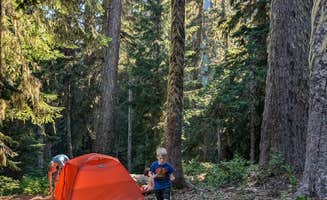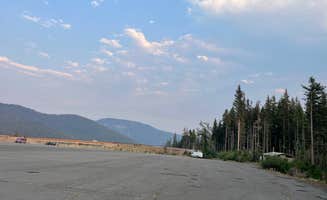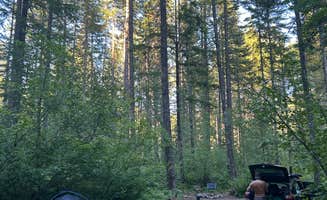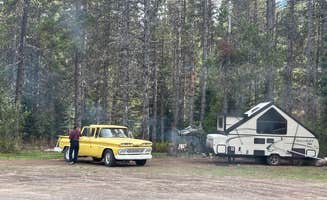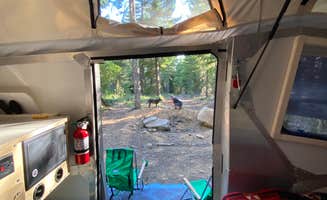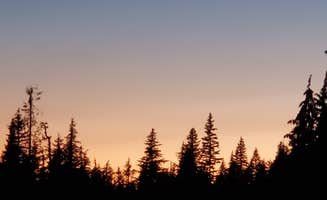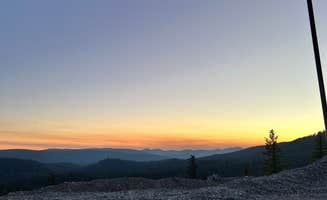Dispersed camping areas near Dallesport, Washington provide no-cost overnight options situated among the volcanic peaks of the Cascade Range. The region sits at elevations between 200-1,000 feet along the Columbia River, with camping spots experiencing temperature swings of up to 30°F between day and night. Free camping locations in the Dallesport area typically allow stays between 7-14 days, though seasonal closures affect accessibility from November through April.
What to do
Hike near Mount Hood: Forest Rd 2730 in Mt. Hood National Forest offers several hiking opportunities. According to a camper, "You can see Mt Hood from the campsite through the trees, albeit it is decently far away and is subject to the visibility at the time you visit. We were able to see Mt Hood just before sunset, but couldn't see her at all the following morning." The area features multiple trails with varying difficulty levels.
Explore river activities: Avery Rec Area provides direct water access. One visitor noted, "Great little swimming spot steps from our spot. Trains will come every hour and tracks are close to sites. A few wineries within a mile and one about .5 miles from spot." The Columbia River offers swimming, fishing, and boating options within walking distance of campsites.
Visit nearby wineries: Several wineries operate within a mile of camping areas. A camper at Avery mentioned, "This was very pretty, down the road from some wineries, and right on the river." Most tasting rooms operate between 11am-5pm and require no reservations for groups under six people.
What campers like
Accessibility to water: Rufus Landing provides waterfront camping without fees. One camper noted, "Up to 7 days allowed in a 30 day period for free boondock/dry camping between April 1 and October 31. Open camping rock/gravel lot in designated areas." Most water-adjacent sites fill quickly during summer weekends.
Mountain views: Campers appreciate the panoramic vistas of volcanic peaks. At Top 'O the Mountain, a visitor shared, "At the top of a mountain with gorgeous views of Mt. Hood and all the other mountains and valleys below." Similar viewpoints exist throughout the region, particularly at higher elevation sites.
Privacy at certain sites: While some areas are crowded, secluded options exist. A camper at Little Soda Springs Rd Dispersed reported, "This location has 2-3 free sites you can drive in and, 2 more walk-in sites near the bridge. It was so nice on a super hot day and there is a nearby latrine at the trailhead!" Most private sites require walking short distances from parking areas.
What you should know
Train noise impacts sleep: Multiple campsites sit near active rail lines. An Avery camper warned, "I mostly want to balance out these other reviews. No one said something that wasn't true, but the weight that they seem to put on how disruptive the trains are surprising to me. You don't just have trains passing, you have them blowing their horn multiple times a night, and they are close enough you can feel their vibration." Earplugs are recommended at sites near tracks.
Access road conditions vary: Many free camping sites require navigating rough roads. Regarding Bonney Meadows, a visitor advised, "You'll want a 4wd or high clearance vehicle to access the last 4 miles. It's worth it in the end." Road conditions worsen after rainfall, with some becoming impassable to standard vehicles.
Enforcement of regulations: Rangers actively monitor dispersed sites. At Little Soda Springs, a camper observed, "You must have a Northwest Forest pass or America the beautiful pass. Forest service does drive through there frequently to check." Fines for permit violations typically start at $75.
Tips for camping with families
Choose sites with amenities: White River West Sno-Park offers basic facilities useful for families. A visitor noted, "Big paved lot with really well managed pit toilets. Short walk takes you to the White River, which was more of a creek when we were there, and a breathtaking view of Mt. Hood." Sites with vault toilets reduce the need for digging catholes with children.
Bring shade structures: Many dispersed sites lack natural shade. A camper at Trillium Lake Airstrip shared, "Some are tucked back in the trees and are more 'prime' spots, otherwise there's a huge middle area that tons of cars can squeeze into as long as you don't mind neighbors." Pop-up canopies provide crucial sun protection during summer when temperatures frequently exceed 90°F.
Pack extra water: No potable water exists at most free camping locations. Plan for 1-2 gallons per person per day, plus additional for cooking and cleaning. The dry climate causes increased dehydration risk, especially for children.
Tips from RVers
Level your rig carefully: Parking surfaces at free sites are rarely level. A visitor to White River West Sno-Park cautioned, "This is a large, paved parking lot with a stream nearby. Has a good view of Mt. Hood and vault toilets, so that's a positive. The downside is that it's not level. Trailers shouldn't have a problem, but even with several blocks under our tires, our 39ft Class A was still un-level." Bring extra leveling blocks for significant grade adjustments.
Generator etiquette matters: At Rufus Landing, an RVer shared, "I ran the generator in my class c rv all night without a problem but made sure I was away from other campers. There is a rule that it cannot annoy other people." Most dispersed areas have unwritten quiet hours between 10pm-7am when generator use should be minimized.


